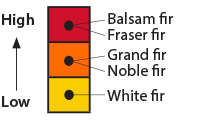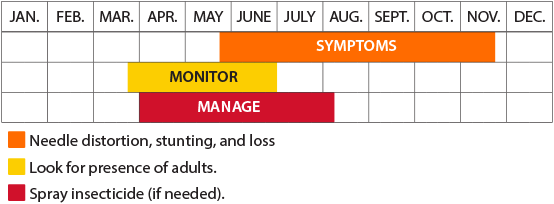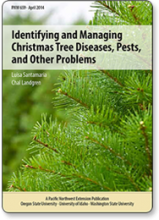- Curled, twisted needles on current year’s growth
- Stunted needles
- Needle loss
- Black, sooty mold on stems, trunk, and needles
- Presence of bees and/or yellow jackets
- Diseases
- Insects
- Disorders
- Damage
- Weather Damage
- Frost Damage
- Winter Injury
- Drought
- Heat Damage
- Chemical Damage
- 2, 4-D and Triclopyr
- Fertilizer Burn
- Glyphosate (Roundup)
- Triazines
- Vertebrate Damage
- Deer, Elk, Mice & Voles
- Rabbits & Birds
- Mechanical Damage
- Mechanical Damage
- About
- Order


